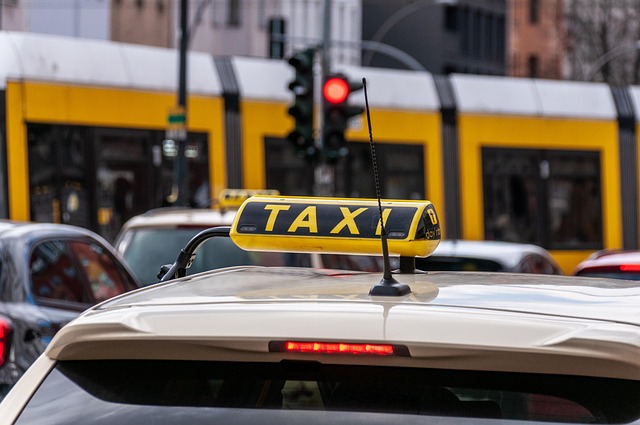Looking to register your car in California? This comprehensive guide will walk you through the entire process, from understanding the requirements to securing your California vehicle registration certificate. First, grasp the state’s unique registration process and essential documents needed for VIN verification. Then, learn how to perform a crucial VIN check and submit applications with the necessary fees. By following these steps, you’ll be driving legally and confidently in no time.
- Understand the California Vehicle Registration Process
- Gather Required Documents for VIN Verification
- Perform a Vehicle Identification Number (VIN) Check
- Submit Applications and Fees to the DMV
- Receive Your California Vehicle Registration Certificate
Understand the California Vehicle Registration Process

Understanding the California vehicle registration process is crucial before diving into the procedure. It begins with a thorough inspection and verification of your vehicle’s unique identifier, known as the Vehicle Identification Number (VIN). This critical step involves a vin inspection to ensure the authenticity and history of the car. In California, you’ll need to verify the VIN through an approved mobile vin verifier or official vehicle history report before proceeding with registration.
The process streamlines when using a mobile vin inspection service, which allows for convenience and speed. These services check the VIN against national databases to gather important information about the vehicle’s past, including any reported accidents, outstanding loans, or recall issues. By completing this initial step, you set the foundation for a smooth registration experience in the Golden State.
Gather Required Documents for VIN Verification

Before heading to the California Department of Motor Vehicles (DMV) to register your car, ensure you have all the necessary documents for VIN verification. The Vehicle Identification Number (VIN) is a unique code that identifies your vehicle, and its accuracy is crucial during registration. Gather the following:
1. Vehicle’s Registration Certificate: This document, often known as the title, proves ownership of the vehicle. If you’ve recently purchased the car, make sure to bring along the bill of sale or purchase agreement from the seller.
2. Proof of Insurance: A valid insurance card or policy document is essential and demonstrates that your vehicle is covered under an insurance policy, which is a legal requirement in California.
3. Identification Documents: Bring official photo identification, like a driver’s license or state-issued ID card, to prove your identity.
4. Previous Registration Records (if applicable): If you’re transferring registration from another state, you’ll need the previous registration documents. Additionally, for some types of vehicles, a mobile vin inspection or vin verification from a certified inspector might be required.
Perform a Vehicle Identification Number (VIN) Check

Before registering your car in California, performing a Vehicle Identification Number (VIN) check is an essential step. This process involves verifying the VIN’s accuracy and checking for any potential issues or recalls associated with the vehicle. It’s a crucial step that ensures you’re providing accurate information to the California Department of Motor Vehicles (DMV).
A mobile VIN verification service can make this process convenient, allowing you to complete it from the comfort of your home. With just a few simple steps, these services use advanced technology to cross-reference your vehicle’s details against vast databases, ensuring every piece of information is correct and up-to-date. This not only saves time but also helps prevent errors that could delay your registration process.
Submit Applications and Fees to the DMV

Once you’ve gathered all the necessary documents and information, it’s time to submit your applications and fees to the California Department of Motor Vehicles (DMV). This is a crucial step in the car registration process, ensuring that your vehicle meets all legal requirements. You’ll need to complete and submit both the Application for Title and Registration form (form DV367) and the Vehicle Identification Number (VIN) verification report.
The VIN verification process can be efficiently handled through a mobile vin verifier or mobile vin inspection service, which allows you to confirm your vehicle’s history and identify any potential issues remotely. By providing your DMV with a valid and accurate VIN verification report, along with the required fees, you’re one step closer to officially registering your car in California.
Receive Your California Vehicle Registration Certificate

After completing your vehicle purchase, it’s time to receive your official California Vehicle Registration Certificate. This document is a crucial part of legally operating your car in the state. Once you’ve secured your title and completed all necessary transactions, request a registration certificate from the California Department of Motor Vehicles (DMV). They will require essential details like your personal information, vehicle specifications, and proof of insurance.
A key step in this process involves confirming your vehicle’s identity through a VIN verification. This is where a mobile vin verifier or a professional vin inspection service can be incredibly useful. By ensuring the Vehicle Identification Number (VIN) on your car matches the records, you avoid potential issues later. It’s a simple yet vital step that ensures both vehicle and owner accuracy.
Registering a car in California involves several straightforward steps, from understanding the process to submitting applications and receiving your certificate. Ensure you have all required documents ready for a seamless VIN verification, as this is a crucial step in the registration process. By following these simple guides, you’ll be on your way to becoming a responsible California driver, enjoying the benefits of a properly registered vehicle.
